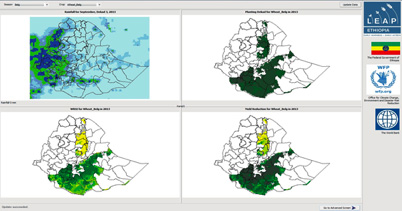MONITORING AND ASSESSMENT OF CLIMATE CHANGE IMPACT
For achieving the objectives
Agenda 2030

ENEA has developed Regional Climate Models for the assessment and diagnosis of climate change impacts on key sectors such as health, agriculture, water ecosystems, energy production and on natural phenomena such as Mediterranean tropical-like cyclones (medicanes). The novelty of these models also stands in their high level of accuracy allowing their application to ever smaller areas, reaching a 5-to-12 km resolution. ENEA is endowed with an alert system that makes use of platform for monitoring seasonal weather forecasts and assessing the impact of poor rain precipitation on the main crops (maize and cereals) and on food safety. The model can also estimate the number of people who can be affected by draught.
 Benefits and advantages:
Benefits and advantages:
- Availability of increasingly reliable, high-resolution regional climate models
- Enhanced representation of extreme events, such as tropical cyclones
- Monitoring the impact of draught on the main crops
- Planning prompt interventions in case of food emergency with economic, social and environmental benefits
ENEA Service:
- design
- consulting
- training
- technical support
 ENEA Activities:
ENEA Activities:
ENEA was one of the designers and developers of LEAP - Livelihoods, Early Assessment and Protection project - a software platform for monitoring and early warning on draught in rural areas in Ethiopia, under the collaboration between the World Food Programme and the Ethiopian government for the management of climate change impact on food safety. The LEAP platform has been used for seasonal weather forecasts under the EUPORIAS project.
Keywords:
limate modelling, climate change, impact, adaptation, environment, health, agriculture, global change, extreme events, energy, Mediterranean, Africa.
References
Territorial and Production Systems Sustainability Department
Climate Modelling Laboratory
